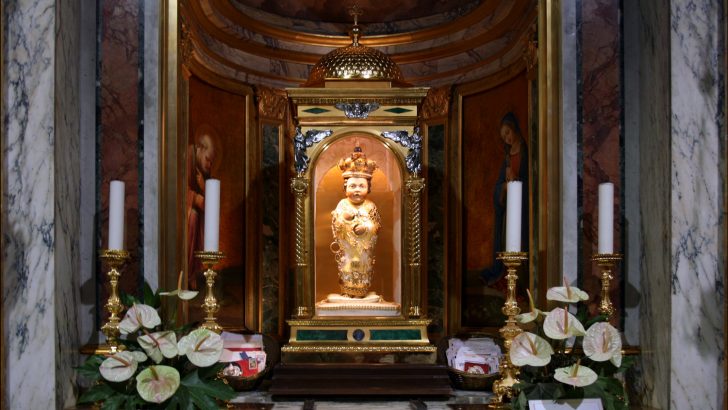Mainly About Books
by the Books Editor
The lockdown came when many were planning summer excursions. Plans for travel have been postponed. So, being well supplied with books of all kinds, I have been rereading with pleasure some older travel books. One is European Detours (1981), subtitled ‘A travel guide to unusual sights’ – for once, an accurate description.
The author of this light-hearted treat was Nino Lo Bello, an Italian American financial journalist, and the author of The Vatican Empire and Vatican, USA. Given his Italian background and Irish wife, it was inevitable that the part of the book devoted to Italy contains a lot of material on curious Catholic sights in Rome.
The places he writes about are off-beat alternatives to the all too often over crowded visitor destinations in the Eternal City.
Everyone knows that the Vatican City is an independent entity, one of the ‘micro-states’ of the world. But what is not so well known is that Rome also shelters an even smaller state. This is the territory of the Sovereign Military Order of Malta, a state the size of two tennis courts, which overlooks St Peter’s.
The order was founded 1048, even before the First Crusade. Many think it exists to provide an agreeable social life for a few, but Lo Bello notes it sent ten White Cross teams to Vietnam to care for children during the war there.
The Order runs hospitals, leper colonies and dispensaries around the world. Visitors can have their passports stamped in an office on its medieval courtyard.
Not all tastes
Another curiosity is the ossuary in the crypt of the Capuchin church of Santa Maria della Concezione on the Via Veneto, though this may well not be for all tastes.
He also describes the Holy Stairs, a shrine in the Vatican which in Holy Week would formerly have been crowded with penitents ascending the steep flight on their knees. Tradition says the steps are from the residence of Pontius Pilate in Jerusalem who used them at the trial of Jesus.
Another sight are the relics once housed in the Museo del Purgatorio. This was created at the end of the 19th Century by a Fr Vittore Jouet, with the support of Pius X and Benedict XV. However, in the last century it was closed for a generation, and when it reopened it had been purged of some of the stranger items.
The items are all marked in some way by deceased souls who returned ‘to reassure the living about the future life’”
What remains are preserved in a cabinet in the Sacre Cuore del Suffragio on the Lungotevere Prati. There were (when Lo Bello wrote) no signs so visitors had to ring and ask for the museum’s guardian. The items are all marked in some way by deceased souls who returned “to reassure the living about the future life”. But, as Lo Bello notes, “the Vatican today remains steadfastly silent about these ‘signs from those who return’”.
The most attractive sight of all is the ‘Bambino of Rome’. The church of Santa Maria in Aracoeli enshrines a statue of the Infant Jesus, crowned and clothed with jewels. Every year at Christmas time the church is inundated with letters and messages from around the world.
These are placed at the foot of the Infant, and when the season is passed, having been checked for money or valuables, all are burned. None are acknowledged. This custom arose, it seems, at the end of 18th Century, but has no official recognition.
They may not be part of what the Church wants to do today, but nevertheless, like all authentic manifestations of Faith, they are worthy of both of respect and perhaps a future visit”
But nevertheless heartfelt messages and pleas for favours sought still come in. Lo Bello quotes one from a small girl: “Dear Bambino, my mother is awaiting a baby. Make him healthy, make him intelligent and make him obey me.”
The humanity of that has to have a universal appeal. Though these places belong to a former phase of Catholicism, they still speak of human needs, hopes and fears. They may not be part of what the Church wants to do today, but nevertheless, like all authentic manifestations of Faith, they are worthy of both of respect and perhaps a future visit.
Perhaps I should also remind readers of the excellent Rome: A Pilgrim Guide by retired priest Michael Rear (Gracewing, £14.99), a more conventional vade mecum which provide just the sort of information travellers with religious intentions will find most useful, and more to the point than the Rough Guide to Rome.


 Peter Costello
Peter Costello The 'Bambino of Rome'
The 'Bambino of Rome' 